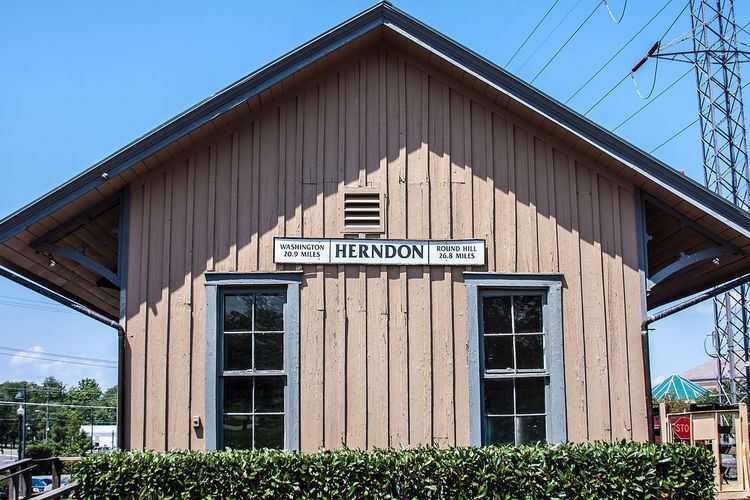Built 1857 VLR # 235-0001 Opened 1857 Added to NRHP 18 June 1979 | NRHP Reference # 79003039 Designated VLR April 17, 1979 Area 1 ha | |
 | ||
Address 717 Lynn St, Herndon, VA 20170, USA Hours Open today · 9AM–5PMFriday9AM–5PMSaturday9AM–5PMSunday9AM–5PMMonday9AM–5PMTuesday9AM–5PMWednesday9AM–5PMThursday9AM–5PM Similar Herndon station, Colvin Run Mill, Frying Pan Farm Park, Dranesville Tavern, Fairfax Station Railroad | ||
Herndon depot museum herndon va
The Herndon Depot Museum, also known as the Herndon Historical Society Museum, is located in the town of Herndon in Fairfax County, Virginia. Built in 1857 for the Alexandria, Loudoun & Hampshire Railroad, the depot later served the Richmond and Danville Railroad, the Southern Railway and the Washington and Old Dominion Railroad. The structure is located at 717 Lynn Street, at the intersection of the Washington & Old Dominion Railroad Trail and Station Street, north of Elden Street (signed nearby as Virginia State Routes 228 and 606). The building is adjacent to Town Hall Square, which contains the Herndon Town Hall, built in 1939 as a Works Progress Administration project to house all of the Town's administrative offices.
The museum houses railroad memorabilia, information on United States Navy Commander William Lewis Herndon, for whom the town was named, and artifacts from the USS Herndon (DD-198), from World War II, and from local residents. The Herndon Historical Society operates the museum.
The depot was the site of a raid that Confederate Army Captain John S. Mosby led on St. Patrick’s day in March 1863. Mosby and his men surprised the Union Army picket guarding the station and captured officers, soldiers and horses with no Confederate casualties.
The railroad was an integral part of Herndon’s agricultural history as large dairy farms surrounded the village. Farmers would ship milk on the railroad daily to Washington for processing and distribution. The railroad station became a center of the community. Businesses sprang up around the station, attracted by the ready access to transportation. With the advent of cars, trucks and better roads, the railroad became less of a necessity for Herndon farmers and residents. The last major assignment for the railway was hauling sand to be used in the concrete mix for runways at Washington Dulles International Airport. The railroad and the depot closed in August 1968.
The depot building is a rectangular, one-story wooden vertical board and batten structure, measuring 70.5 by 20.1 feet (21.5 m × 6.1 m). Victorian style buttresses under the eaves are the building’s only decorative feature. The window and door framings and the two baggage doors are original, as are the semaphore and several pieces of hardware.
The building was listed on the National Register of Historic Places in 1979. Its site is marked as part of the Virginia Civil War Trails program.
